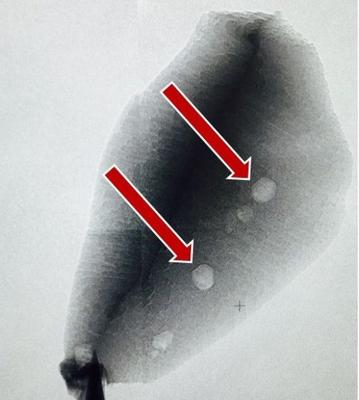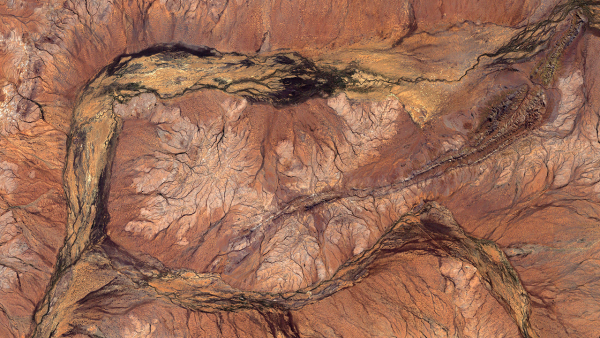Life on Earth could appear 300 million years earlier than is commonly believed.

Inclusions of graphite in zircon
Geochemists at the University of California at Los Angeles (UCLA) claim to have found indirect evidence of the possibility of the origin of life on our planet 4.1 billion years ago, which is 300 million years earlier than it is considered today. They base their evidence on the ratio of the content of various carbon isotopes in zircon.
Zircon (ZrSiO 4 ) is an especially strong crystalline mineral. It is found in abundance in the crust, while due to its durability it survives many other minerals. The earliest of the found crystals date back 4.4 billion years - despite the fact that the approximate age of the planet Earth is estimated at 4.5 billion years.
')
In this regard, zircon crystals are all that geologists have to study the earliest epochs of the formation of our planet. Due to their strength, they can be used to extract valuable information that is inaccessible for other means. For example, thanks to zircon, geologists put forward a hypothesis about the existence of liquid water on our planet as far back as 4.4 billion years ago, in the most ancient geological epoch of the Catharches .
Geochemists from Los Angeles studied samples of zircon obtained in the hills of Jack Hills in the west of the Australian continent, in search of inclusions of carbon minerals such as diamonds and graphite. The presence of these minerals is not in itself evidence of the existence of life, but their structure may provide answers to some questions.

Jack Hills Hills
A small specimen of graphite, found in a zircon crystal aged 4.1 billion years, had a low ratio of heavy carbon to light isotopes. And just such an isotopic “signature” is very characteristic of organic matter. According to the author of the study, Elizabeth Bell [Elizabeth Bell], if scientists considered such carbon belonging to modernity, they would come to an unequivocal conclusion about its biological origin.
Of course, for katarhea this is not indisputable evidence. Moreover, the authors of the work honestly give several non-biological explanations of the origin of such a characteristic mineral. For example, he could get to Earth along with a meteorite, or form in a chemical reaction of Fischer - Tropsch , in which various hydrocarbons are formed.
At the same time, geochemists from California still tend to the hypothesis, according to which the found graphite has a biological origin, and fell into the mantle of the planet in the collisions of tectonic plates. Then, after falling into magma, carbon under the influence of high temperatures and pressures turned into graphite, and then fell into a zircon crystal.
If this theory can be confirmed, the first few hundred million years of the Earth’s development will be transformed by scientists from lifeless, sterile, filled with volcanic eruptions and meteorite falls into more comfortable and suitable for the origin of life. This hypothesis will be supported by another one, which speaks of the presence of liquid water on the planet at the earliest stages of its development.
There is no need to hurry up with conclusions - in 2008 scientists already announced the discovery of inclusions of carbon minerals of potentially organic origin in zircon crystals aged 4.3 billion years. But a subsequent analysis of the data showed that the zircon samples were simply subjected to laboratory contamination. However, knowing the details of this story, in the current study, scientists have taken all the necessary precautions.
Another argument in favor of this hypothesis can be the study of minerals from Mars, where you can find minerals older than 4 billion years. If there is evidence of the existence of life at that time with our neighbor in the Solar System, then the hypothesis of the early origin of life on Earth could become more convincing.
Source: https://habr.com/ru/post/368723/
All Articles